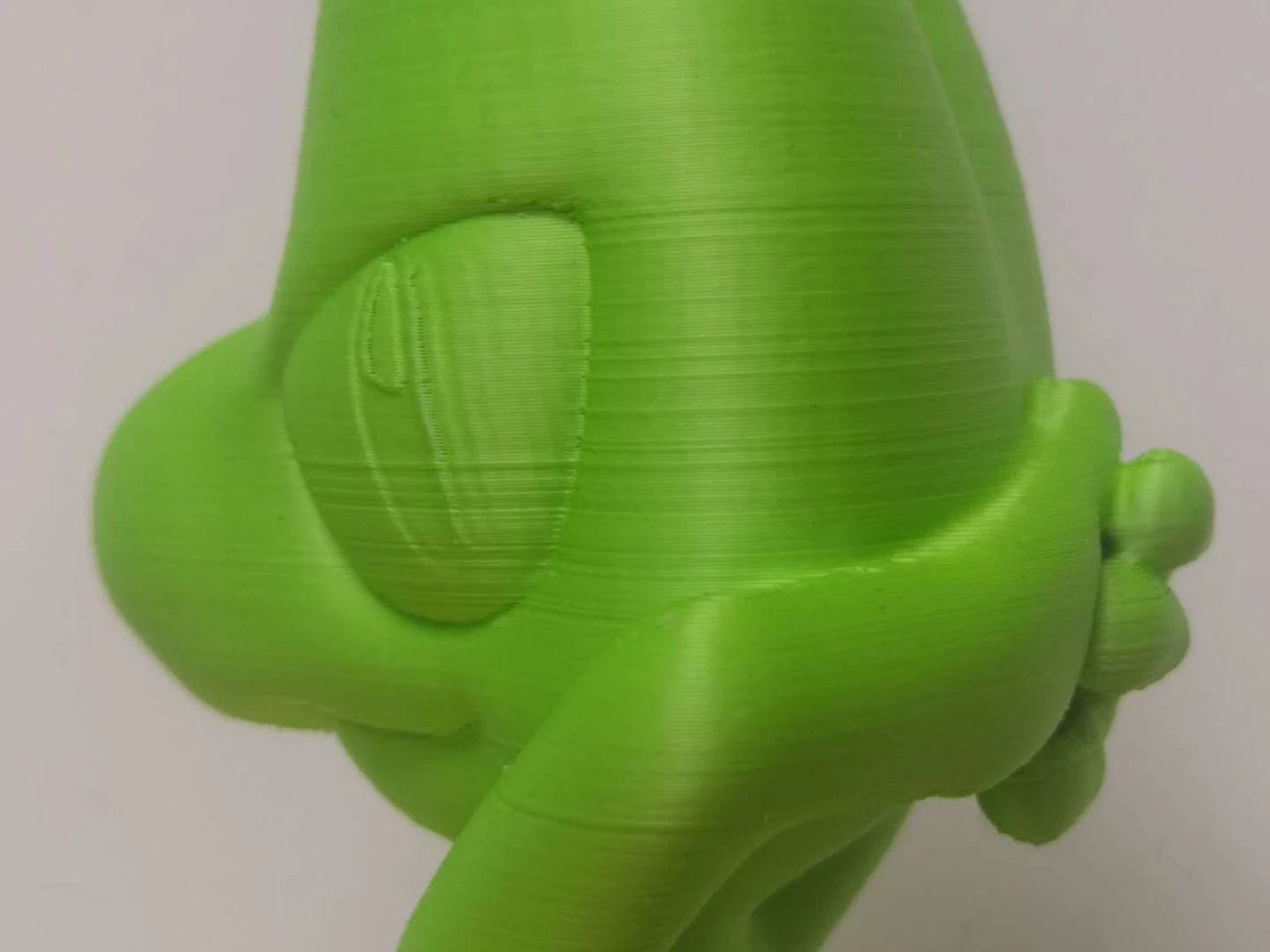WHAT’S THE ISSUE?
Normal printing results will have relatively smooth surface, but if there is a problem with one of the layers, it will be clearly showed on the surface of the model. These improper issues will appear at every certain layer that like a line or ridge on the side of the model.
POSSIBLE CAUSES
∙ Incosistent Extrusion
∙ Temperature Variation
∙ Mechaical Issues
TROUBLESHOOTING TIPS
Extrusion
If the extruder couldn’t work stably or the diameter of the filament is inconsistent, the outer surface of the print will appear lines on the side.
Inconsistent extrusion
Go to Inconsistent Extrusion section for more details of troubleshooting this issue.
Printing Temperature
As plastic filaments are sensitive to temperature, changes in printing temperature will affect the speed of extrusion. If the printing temperature is high and sometimes low, the width of the extruded filament will be inconsistent.
Temperature variation
Most 3D printers use a PID controllers to adjust the extruder temperature. If the PID controller is not tuned properly, the temperature of the extruder may fluctuate over time. Check the extrusion temperature during the printing process. Generally, the temperature fluctuation is within +/-2℃. If the temperature fluctuates more than 2°C, there may be a problem with the temperature controller, and you need to recalibrate or replace the PID controller.
Mechanical Issues
Mechanical problems are a common cause of lines on the surface, but specific problems may occur in various places and need patience to investigate. For example, when the printer is working, there is shaking or vibration, which causes the position of the nozzle to change; the model is tall and thin, and the model itself sways when printing to a high place; the screw rod of the Z-axis is incorrect and this make the movement of the nozzle in the Z axis direction is not smooth, etc.
Placed on a stable platform
Make sure the printer is placed on a stable platform to prevent it from being affected by collisions, shaking, vibrations, etc. A heavier table can better reduce the impact of vibration.
Add support or bonding structure to the model
Adding support or bonding structure to the model can make the model stick to the print bed more stably and avoid the model from shaking.
Check the parts
Make sure the Z-axis screw rod and the nut are installed in the correct position and not to be deformed. Check whether the micro stepping setting of the motor controller and the gear gap is abnormal, whether the movement of the print bed is smooth, etc.
Post time: Jan-06-2021
